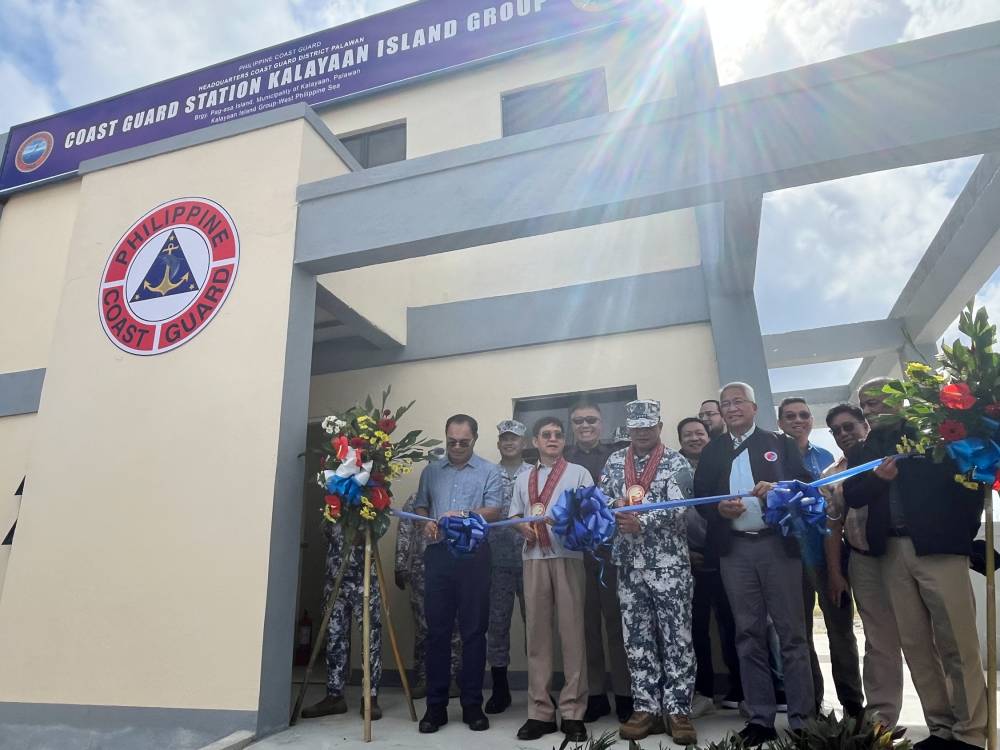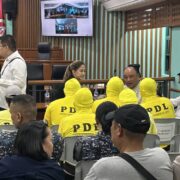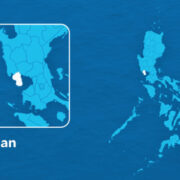New island station to get more tech for watching China

PAG-ASA ISLAND, West Philippine Sea—A new three-story building of the Philippine Coast Guard (PCG) has been built at the country’s largest and most strategically important outpost in the Kalayaan Island Group as part of efforts to counter Chinese aggression in these waters.
The facility is the latest infrastructure on Pag-asa (Thitu) Island, which in recent years also saw the rehabilitation of a 1.3-kilometer runway and the construction of a sheltered port, a beaching ramp and other civilian facilities to assert the country’s sovereignty in the West Philippine Sea.
The new station will soon be equipped with radars, automatic identification systems, satellite communication, coastal cameras and vessel traffic management which will keep track of Chinese activities, National Security Adviser Eduardo Año said during the inauguration of the building.
“The behavior of the China Coast Guard, People’s Liberation Army Navy, Chinese maritime militia vessels are sometimes unbelievable. They do not adhere to international order, rule of law. It’s no longer gray zone tactics. It’s pure bullying and it’s pure illegal. It’s not acceptable under international law,” he told reporters after the program on Friday.
Sightings, warnings
Chinese coast guard and maritime militia vessels constantly harass Philippine ships in the West Philippine Sea, particularly those carrying out resupply missions to the BRP Sierra Madre in Ayungin (Second Thomas) Shoal.
During his visit, Año saw at least 18 Chinese vessels, including a Chinese navy ship, through a telescope at Emilio Liwanag Station near the new facility.
Located some 22 kilometers from Pag-asa is Zamora (Subi) Reef, which China has transformed into a sprawling military outpost complete with a 3-km runway, hangars, radars, missile shelters and weapons systems.
The Philippine Air Force (PAF) plane that brought Año and other security officials to Pag-asa also received radio warnings from China telling them to stay away. The PAF pilots responded by stressing they were en route to Philippine territory.
Pag-asa is the seat of the municipal government covering the Kalayaan Island Group. It was established in 1978 by then President Ferdinand Marcos Sr. to assert the country’s claim to the Spratlys, an archipelago of more than 700 reefs, islets and atolls in the South China Sea.
‘Crucial roles’
China claims almost the entire South China Sea, where the Philippines, Vietnam, Taiwan, Brunei and Malaysia also have overlapping claimsOut of nine features occupied by the Philippines in the Kalayaan Island Group, Pag-asa is the only one with a permanent civilian population.
The outposts used to be controlled solely by the military, but the civilian PCG also started conducting operations here in recent years.
According to Año, this is part of an “evolution” in their approach to the West Philippine Sea issue, where “other agencies also have crucial roles to play, equally important with our uniformed personnel.”The new station inaugurated on Friday was built in 10 months and replaced a provisional base that was destroyed by Typhoon “Odette” (Rai) in 2021.
Año said other features were also undergoing renovation to improve the living conditions of deployed personnel. “So that our fishermen can (also) go there, as well as researchers, and to provide sanctuary to anyone who needs help no matter what nationality,” he said.Plans to expand the recently concluded joint patrols with the United States and Australia into multilateral activities in the West Philippine Sea are under way, Año said.Japan, for example, is “very eager” to join the patrols, he added. “We are open to like-minded countries (that can) join as observers or participants.” ‘Hype-up’Meanwhile, Beijing accused Manila of resorting to “sheer malicious hype-up” after the latter claimed a Chinese aircraft had been seen monitoring Philippine-Australian naval exercises earlier this week.At a press briefing late Thursday, Ministry of National Defense spokesperson Wu Qian said China opposes “any act that [would] stir up confrontation and heighten tensions” in the South China Sea.“The remarks of the Philippine side are inconsistent with what really happened on the ground and is a sheer malicious hype-up,” Wu said.
“Defense and security cooperation between countries shall not target any third party or harm a third party’s interests and shall not undermine regional peace and stability,” he added.
Wu was responding to reports by the Armed Forces of the Philippines that a Chinese aircraft was seen flying close to the joint patrol held near the shores of Palawan on Nov. 27. —WITH A REPORT FROM JACOB LAZARO INQ

















